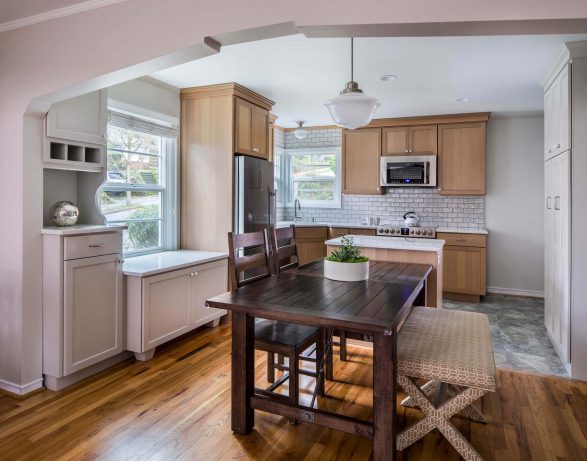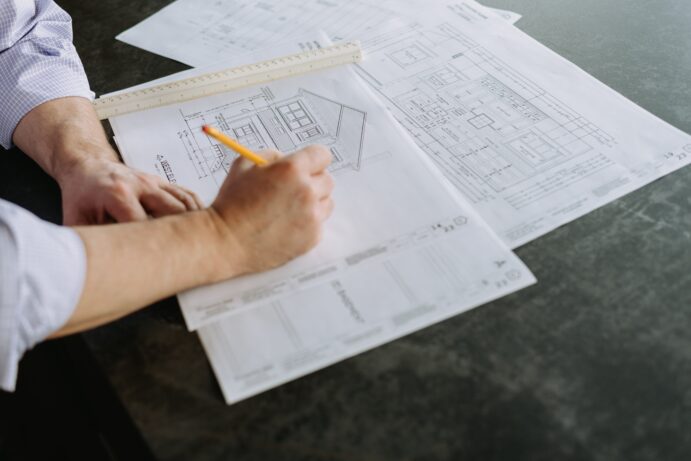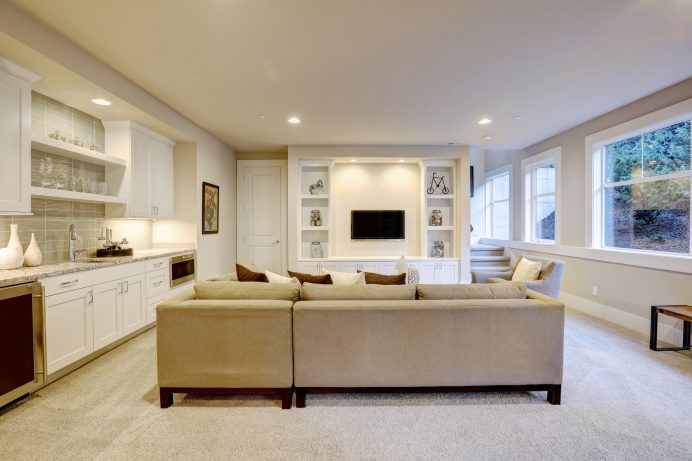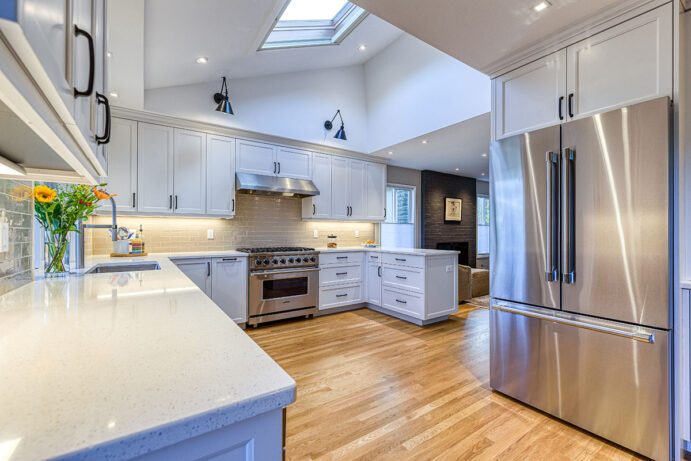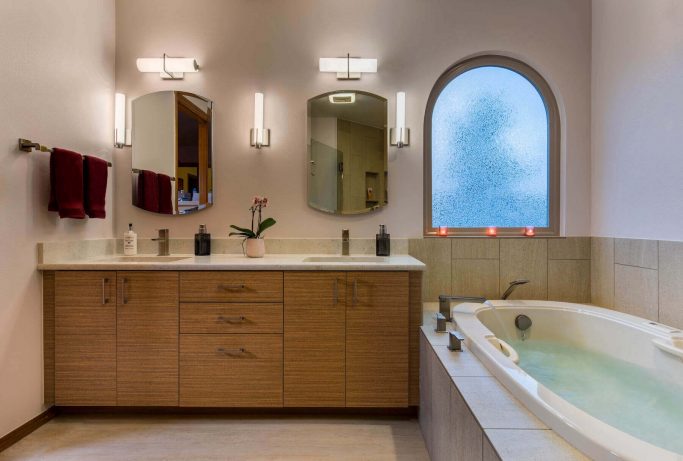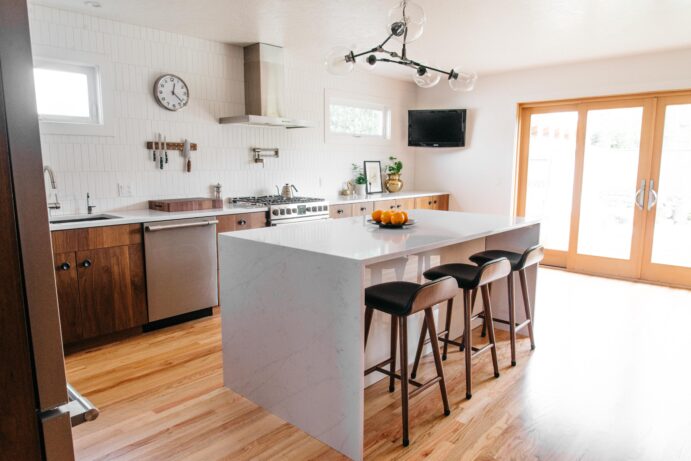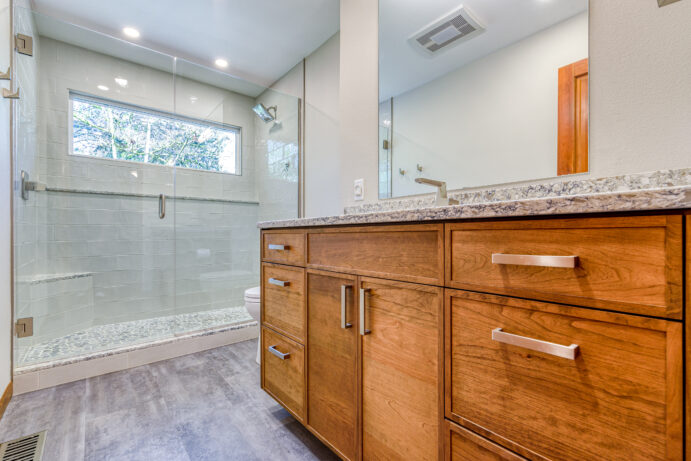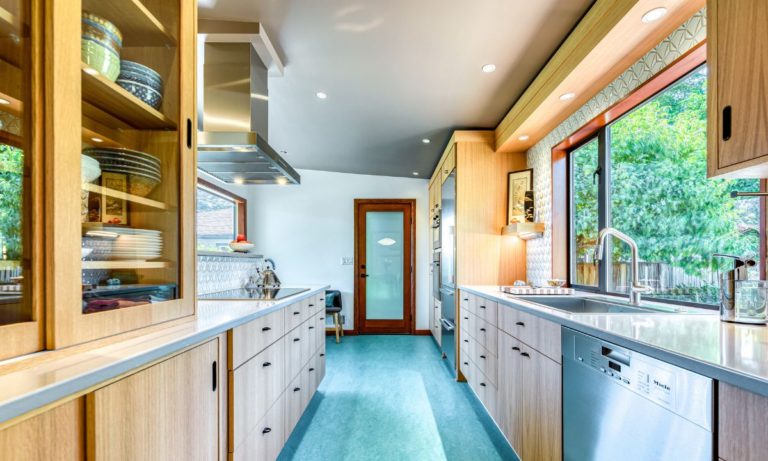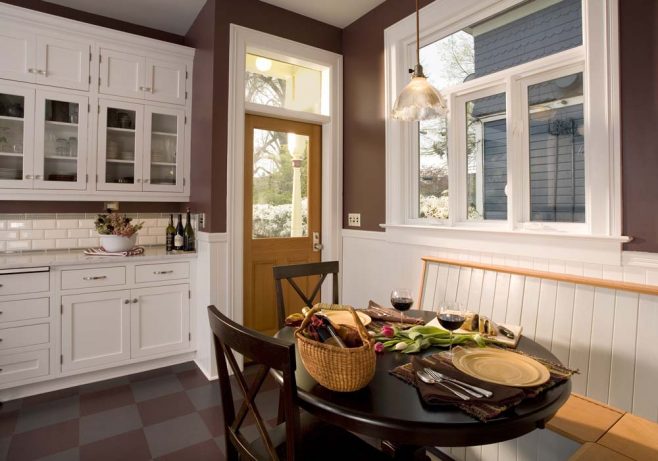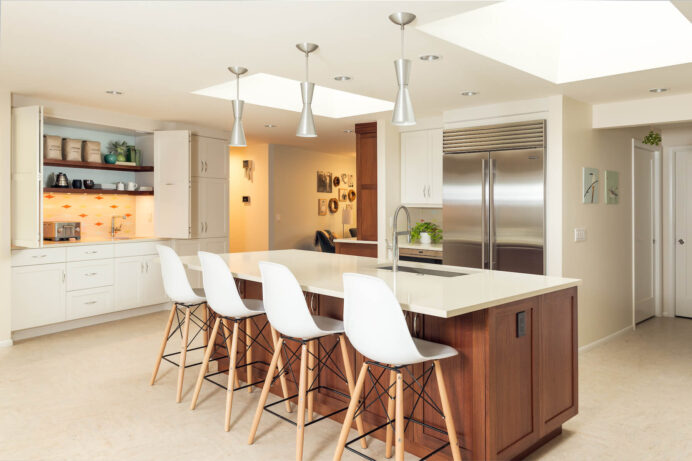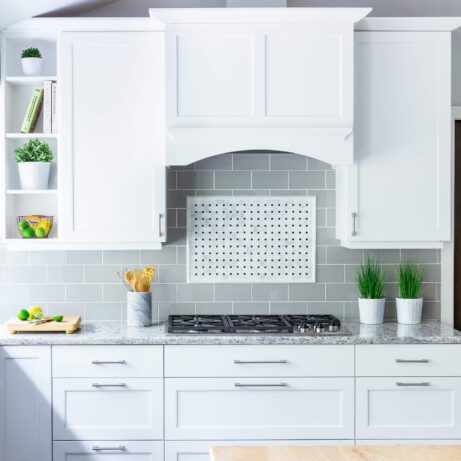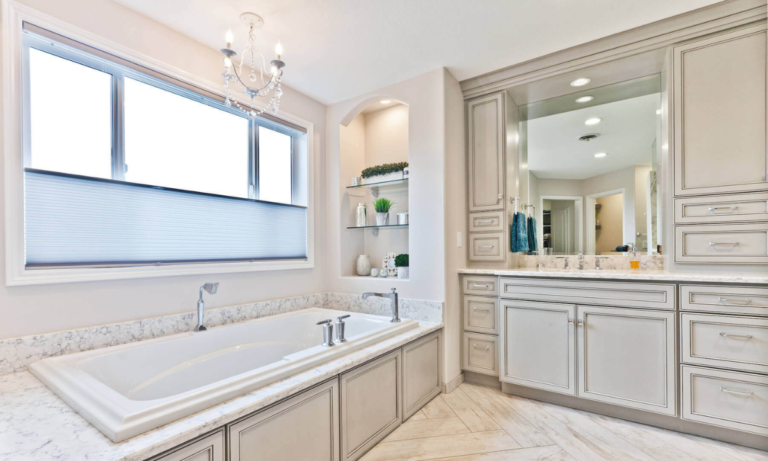Some renovations are focused on a single space, like updating a bathroom or kitchen. But what if you’re feeling like your whole home needs a refresh? Whole house remodels are ideal for homeowners looking to revamp more than just a single room. At first this might feel like an overwhelming project to tackle, but a whole house remodel is more attainable than you might think.
These types of remodels aren’t always complete renovations that involve total demolition and reconstruction (although they can be). In many cases, it’s about identifying the rooms and areas in your home that aren’t serving you or your family best and creating a vision for how these spaces and features can function better. Then, it’s about finding skilled professionals who know how to make that vision a reality.
Here’s everything you need to know about planning and completing a whole home remodel.
Determining the Scope of Your Remodel
Taking on a whole house remodel is a big commitment. Depending on the size of your home, a renovation can take several months. That’s why planning and really understanding what you’re hoping to achieve is essential to ensuring a smooth and successful large-scale remodel.
Take a close look at your current living situation and how it impacts your daily life. This will help you identify what works and doesn’t work for your family. Do you have enough space? Are you looking to make structural changes or alter layouts? Are there certain rooms you want to prioritize? Are you hoping to increase resale value? These are just a few questions you should consider when determining the scope of your remodel.
Planning Your Home Remodel
Create a vision for your new space.
Finding inspiration for your new home is a fun and creative process. Before you reach out to a designer or contractor, it’s a good idea to gather some photos and ideas to help you get a sense of how you want your new home to look.
Here are a few great places to start:
- Check out websites and apps like Pinterest, Instagram, or Houzz and save photos of spaces you love.
- Walk through the isles of your local home-improvement store and browse the flooring, cabinetry, light fixtures, and furnishings they have on display. Note which styles appeal to you most.
- Create a digital or physical style board that includes the materials, photos, and ideas you love.
Set a realistic budget.
Budgeting for your project is an important early step that can help you prioritize the spaces and features that are most important to you. You can estimate your costs by doing some basic research and gathering quotes from designers and contractors. In many cases, working with a design-build company like Square Deal Remodeling can save you time and money on your project. It’s also easier to estimate costs when you’re working with a single company.
Consider timelines.
Generally speaking, a whole home remodel usually takes about 4-9 months to complete. However, because each home and family is unique, there are many factors that will impact your timeline. It’s a good idea to hire a professional to help you determine as well as stick to a realistic timeframe.
Hiring Professionals
Find and hire a contractor.
Choosing the right contractor for the job is essential to a successful renovation. Do your research by looking at each potential contractor’s past work. You’ll also want to pay attention to how they communicate, customer reviews, and certifications.
Work with a designer or architect.
Even if you have a good idea of your vision, a professional designer can help you bring your ideas to life. Many companies offer design and build services together. This can help to streamline and simplify your project, as you won’t have to juggle communications with two separate companies.
Construction
Once you’ve finalized the details of your remodel and approved the plan proposal, the next step is watching your house transform into the home of your dreams. In some cases, you may need or want to leave your home while construction takes place. Whether you’re staying in your home or elsewhere, it’s important to keep a close eye on the progress of your remodel. Periodic walk-throughs with your contractor will ensure your project is progressing to your satisfaction.
Navigating Challenges and Setbacks.
With any home remodel, setbacks are all but guaranteed. From water damage to foundation issues, it’s not uncommon for homeowners to discover some unforeseen challenges that impact their original timeline. During a home remodel, it’s a good idea to:
- Expect the unexpected – Account for potential setbacks when creating your budget and timeline. Make sure you have some extra funds available to address problems.
- Work with professionals you trust – Having a reliable designer/contractor is invaluable during a remodel. A qualified, experienced company will keep you in the loop every step of the way and remain focused on meeting your needs as quickly as possible.
- Get inspections done before you start – In some cases, structural problems in your home can be found before the construction process begins. Identifying issues beforehand will help you plan more accurately and potentially save you a lot of time and labor.
Finalizing Your Remodel.
When construction is complete, your contractor will perform final inspections and you’ll meet on-site for a final walk-through. Once your final walk-through is complete, you can sit back, relax, and celebrate in your new and improved home.


